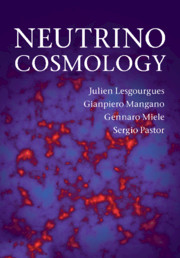Book contents
- Frontmatter
- Contents
- Preface
- 1 The basics of neutrino physics
- 2 Overview of the Standard Cosmological Model
- 3 Neutrinos in the early ages
- 4 Neutrinos in the MeV age
- 5 Neutrinos in the cosmic microwave background epoch
- 6 Recent times: neutrinos and structure formation
- 7 Cosmological neutrinos today
- References
- Index
3 - Neutrinos in the early ages
Published online by Cambridge University Press: 05 March 2013
- Frontmatter
- Contents
- Preface
- 1 The basics of neutrino physics
- 2 Overview of the Standard Cosmological Model
- 3 Neutrinos in the early ages
- 4 Neutrinos in the MeV age
- 5 Neutrinos in the cosmic microwave background epoch
- 6 Recent times: neutrinos and structure formation
- 7 Cosmological neutrinos today
- References
- Index
Summary
A Tale of Three Numbers:1, 3 and ∞. This might be a good subtitle for this chapter, which is about the problem of baryogenesis in the early universe.
We have already mentioned in Chapter 1 that observations of the light nuclear yields produced during primordial nucleosynthesis and the features of the CMB anisotropies single out a definite value for 1 parameter, the baryon-to-photon density ratio ηB ~ 6 × 10−10 at low temperatures, much below the nucleon mass. If the universe's expansion were starting with symmetric initial conditions, i.e., a zero initial baryon number per comoving volume, and no baryon-violating interactions were at work at all stages of this expansion, ηB would be expected to be much smaller, as we will show in the following. Moreover, we should detect a comparable number of antibaryons in the solar system or on larger scales, such as our galaxy (30 kpc) or the Local Group (3 Mpc). However, this is not what we do observe. Baryogenesis is a collection of several theoretical ideas on how the tiny value of ηB might be dynamically produced at some stage of the universe's history. The number of models which have been proposed is quite large, although maybe not really∞! Despite their different particular properties, they all share some common features, because they should all fullfill three basic conditions which were first put forward by Sakharov quite long ago (Sakharov, 1967).
- Type
- Chapter
- Information
- Neutrino Cosmology , pp. 106 - 133Publisher: Cambridge University PressPrint publication year: 2013



